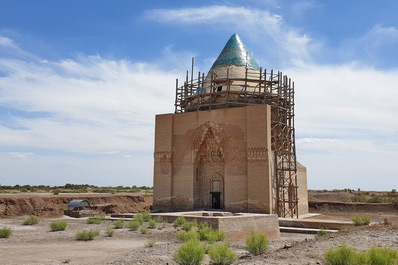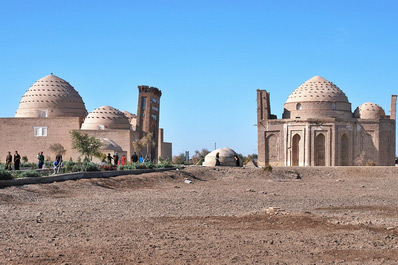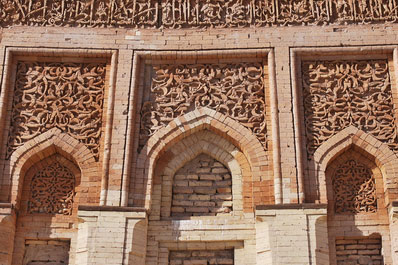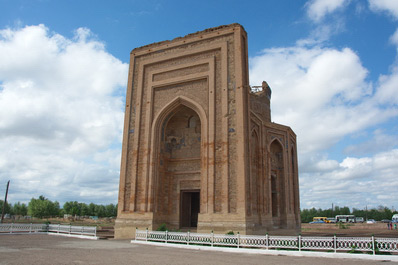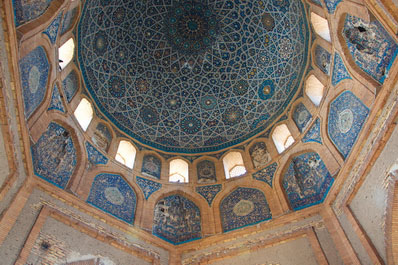Kunya Urgench, Turkmenistan
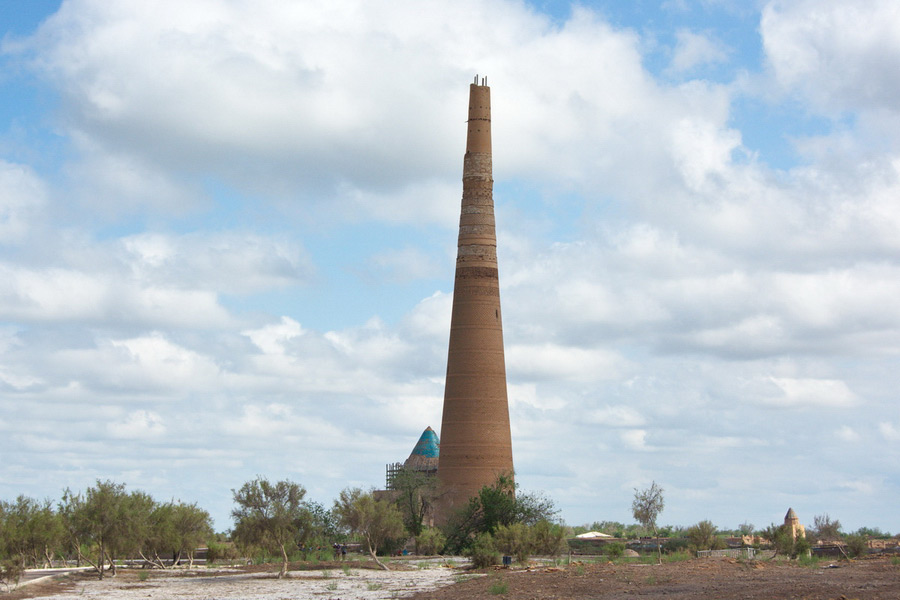
Former names: Gurganj, Urgench
State language: Turkmen
Time zone: UTC+5
Population: 36 754 people
Phone code: +993 347
Postal code: 746350
Vehicle code: DZ
Kunya-Urgench is an ancient city that once flourished on the banks of the Amu Darya River. At its peak, it covered an impressive 1,500 hectares and was considered one of the largest cities in the world. Travellers to the East called it the 'Heart of the World'. Although only a few monuments remain today, scattered across a vast desert landscape, Kunya-Urgench is now a UNESCO World Heritage Site and a popular stop on tours of Turkmenistan.
How to Get to Kunya-Urgench
Kunya-Urgench is located in the northern part of Turkmenistan, near the border with Uzbekistan, about 40 kilometres from the Amu Darya River. It is 120 kilometres from Dashoguz, which has an airport that receives flights from Ashgabat. The capital, Ashgabat, is much further away, about 480 kilometres south of Kunya-Urgench.
Tourists often travel from Ashgabat to the Darvaza gas crater (270 km) and then continue another 260 km to Kunya-Urgench by four-wheel drive.
Day trips to Kunya-Urgench are also available from Uzbekistan:
- From Nukus: 50 kilometres, with a driving time of about 2 hours, including the Khojeili- Kunya-Urgench checkpoint.
- From Khiva: 165 kilometres, taking almost 4 hours, including the Shavat-Dashoguz checkpoint.
Kunya-Urgench Tours
Kunya-Urgench (Turkmen: Köneürgenç) is one of the oldest cities in Turkmenistan and features prominently on many tours of the country and Central Asia. Today, only a few reminders of its former splendour are left, including the mausoleums of the Khorezm rulers, a 60-metre minaret and other historical sites. It takes between half a day and two days to see all the main attractions, depending on the tour.
Due to its location near the Uzbek border, Kunya-Urgench is often the final stop on tours of Turkmenistan, after a visit to the Darvaza crater. Alternatively, day trips to Kunya-Urgench from Nukus or Khiva are popular.
Tours to Kunya-Urgench appeal to those interested in history and medieval oriental architecture, as well as pilgrims and explorers seeking places of spiritual significance.
Brief History of Kunya-Urgench
Kunya-Urgench, with its long and rich history, has seen the rise and fall of many dynasties. Known by various names over time - Gurganj, Urgench and Kunya-Urgench - it was the capital of ancient Khorezm. Although the exact date of its founding is unknown, the city is first mentioned in the Avesta, the sacred Zoroastrian scripture, as Urga or Urva. Chinese chronicles from the 3rd-1st centuries BC also refer to the city under the name Yue-gan.
The name Gurganj originated in the 8th century when the city came under Arab rule. In the 12th and early 13th centuries, Gurganj was one of the most populous and prosperous cities in Central Asia, renowned for its flourishing handicrafts.
In 1221, the Mongol army led by Genghis Khan's sons - Jochi, Chagatai and Ogedei - besieged the city. After seven months, the Mongols stormed Gurganj, captured its inhabitants and renamed it Urgench.
In the 14th century, the city came under the control of the Uzbek Khan, ruler of the Golden Horde. Between 1372 and 1379, Tamerlane invaded the city four times, plundering it and taking its artisans, craftsmen and scholars to Samarkand. In 1388, Tamerlane dealt the final blow, leading to the city's decline.
From 1511 to 1598, Urgench served as the capital of the Khiva Khanate. At the end of the 16th century, however, the Amu Darya River shifted its course, forcing the city's inhabitants to abandon their homes. In 1646, a new city called Urgench was founded in present-day Uzbekistan, and the old city became known as Kunya-Urgench.
Archaeological work began in the mid-20th century, and in 2005 Kunya-Urgench was inscribed on the UNESCO World Heritage List for its historical significance and well-preserved monuments.
Kunya-Urgench Sights& Attractions
Kunya-Urgench is a historical and architectural reserve with monuments dating from the 12th-16th centuries, as well as older sites. The impressive craftsmanship of these structures demonstrates the advanced construction techniques of the time. Some of the most notable monuments included in tours of Kunya-Urgench are
- Kyrk-Molla Hill: The oldest monument, dating back to the 1st millennium B.C. It is also a pilgrimage site with a fascinating legend associated with it.
- Kutlug-Timur Minaret: At 60 metres high, this 14th century structure is the tallest minaret in Central Asia.
- Mausoleum of Tyurabek-Khanim: Built in the 14th century, this mausoleum honours the daughter of the Uzbek Khan, ruler of the Golden Horde.
- Mausoleum of Khorezmshah Tekesh: A late 12th century monument known for its distinctive architectural design.
- Mausoleum of Il-Arslan (Fakhr al-Din al-Razi): This 12th century structure displays a mixture of artistic and technical styles.
- Mausoleum of Najmaddin al-Kubra: A well-preserved 12th-13th century monument and an important pilgrimage site.
- Sultan Ali Mausoleum: This 16th century tomb, dedicated to Khorezm Shah Sultan Ali, remains unfinished due to the abandonment of the city.
Best Time to Visit
The climate in Kunya-Urgench is sharply continental and dry. The ideal time to visit is in March, April, May, September and October, when the weather is more moderate.
From November onwards, temperatures drop significantly, with night-time lows often below 0°C and daytime highs rarely exceeding 5°C. Winter also brings strong winds, making travel less comfortable.
In summer, the weather becomes extremely hot and dry, with daytime temperatures often reaching +40°C. If you're visiting in the summer, it's best to explore in the early morning or late afternoon to avoid the midday heat.

